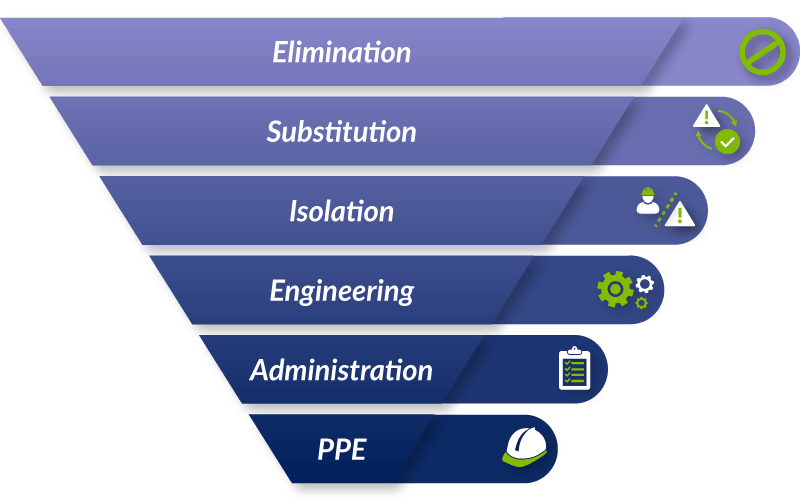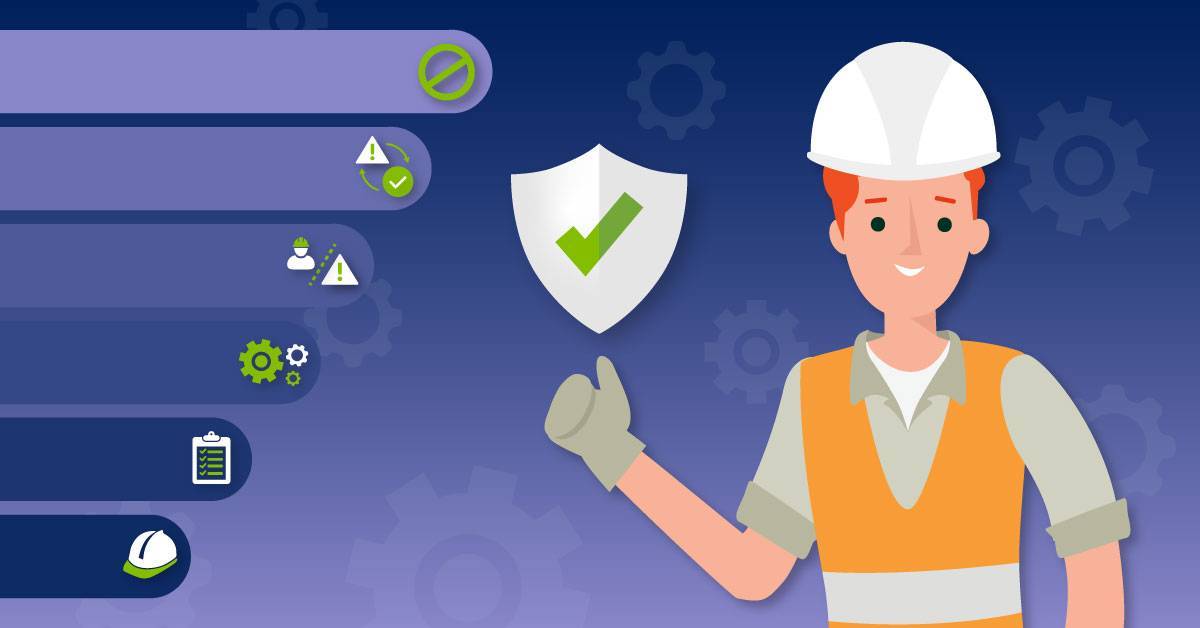Introduction to the Hierarchy of Control
The Hierarchy of Risk Control is a system that details the various approaches to eliminating or reducing risks from the most to least effective. Depending on the likelihood of the risk eventuating and the severity of potential harm, appropriate controls can be applied to eliminate or mitigate the risk.
Employers have a duty to eliminate risks to health and safety, so far as reasonably practicable under the Occupational Health and Safety Act 2004 (OHS Act). Where it is not reasonably practicable, then you must reduce the risks. By utilising the Hierarchy of Control, you can work through the various levels to select controls that reduce your risks and hazards in the most practicable way.

As you assess the most effective (and reasonably practicable) controls, you should consider whether it is necessary to halt activities until controls are implemented, or introduce temporary risk controls in the interim. The highest level of reasonably practicable protection can sometimes be achieved through implementing a combination of different controls that work together.
 Elimination
Elimination
Complete elimination of the risk offers the highest level of protection and is therefore the most effective measure in the Hierarchy of Control. Elimination could involve the removal of height access plant in window-cleaning and performing works using water-fed tools at ground level instead of from height.
 Substitution
Substitution
Where elimination of the risk is not reasonably practicable, it may be effective to reduce it by substituting the hazard with another safer alternative. This could include utilising cordless equipment in a site where power cables could be damaged or cause trip hazards. Or replacing a hazardous cleaning chemical with a safer, greener alternative.
 Isolation
Isolation
Another risk reduction method isolation of the hazard from people (including workers, contractors and the public). This could take the form of using physical barriers like walls, bollards and guard rails to separate people from hazards, and even the use of remote control machinery to perform tasks.
 Engineering
Engineering
Risks can also be reduced through engineering changes to equipment, methods and systems of work. For example, installing guards on machinery with moving parts, using hoists and trolleys for the handling of heavy loads, and utilising technology around the site to detect and prevent exposure to risks.
 Administration
Administration
Administrative controls can be used to minimise the exposure of workers to hazards that cant; be controlled in other ways, and can reduce levels of potential harm. Examples include the formulation of Safe Work Method Statements (SWMS), risk assessments, policies, and procedures that define how work is to be conducted in the presence of these risks. These may include the implementation of signage around hazardous areas, limiting the amount of time workers can spend on or around a hazardous activity, and defining specific procedures and work instructions for safe use of plant and equipment.
 Personal Protective Equipment (PPE)
Personal Protective Equipment (PPE)
Clothing and equipment that are used to minimise risks to a worker’s health and safety is known as Personal Protective Equipment (PPE). These items are often necessary however are considered the least reliable control and offer the lowest level of protection from risks as they limit exposure to the harmful effects of a hazard, but only if they are worn and used correctly.
Examples of PPE include:
- Hard hats
- Eye and ear protection
- Respirators and face masks
- Harnesses
- Welding jackets and face shields
- Gloves, gauntlets and aprons
- Sunscreen
- Freezer suits
- Rubber boots and gloves
- Arc-rated clothing for use in work where there is an arc flash hazard
- Faraday cage
Applying the Hierarchy of Control to Contractor Management
The use of contractors, rather than your own employees, to perform tasks can be effective but also presents risks. Your duty to provide a safe workplace also extends to contracted workers, and therefore it is important to consider the risks involved in their work and what controls you can put in place, or request from them. It is important that you look at the safety documentation they bring to site to ensure it is suitable for the work to be done that day. Cm3 can examine your contractor’s evidence at prequalification to make sure consideration has been given to the hierarchy of control and that risk control can be achieved by the methods they propose to use.
Examples of how to apply the Hierarchy of Control to your contractor management include:
Elimination |
Ask if a contractor must enter a confined space, or use height access equipment for example, or if the work can be done another way. You may need to consider what YOU can do to eliminate the hazard for them if it relates to your asset. |
Substitution |
Ask what products are being used by your contractor and if there are safer alternatives that will work effectively. Consider anything that might void warranty if you change it. |
Isolation |
Ask how your contractor is going to isolate and control noisy processes, generation of dust and fumes, prevent concrete slurry or other contaminants entering workplaces and presenting environmental risks via stormwater drains or similar. |
Engineering |
Ask if your contractor can use an attachment or jig to make a lifting task easier. Or if they can put a guard on a machine, for example a brush cutter, to prevent material being ejected at high speed. |
Administration |
Utilising a prequalification platform like Cm3 to ensure your contractors have the licences, insurances and WHS systems in place to get the work done safely. |
Personal Protective Equipment (PPE) |
Ensuring contractors have, or are given access to, the correct personal protective equipment for the work they are performing, and are using them correctly. |
